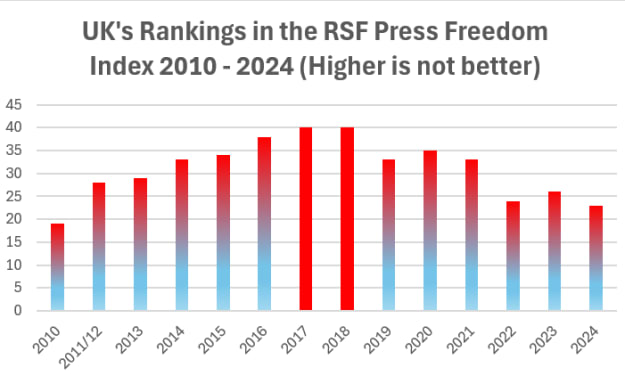History of Racism in the United States
History of Racism in the United States

These days, racial tension in the United States is extremely heightened. The indigenous inhabitants commonly known as Native Americans became the first victims of racism. Later, racial discrimination affected the black population of the country. In spite of numerous politically correct declarations of the US leadership, the confrontation between African-Americans and Caucasian people still prevails. Moreover, the country is virtually flooded by all sorts of armed extremist organizations with racist doctrines. It is of vital importance to study the history of racism in the United States as it has always been and remains one of the most pressing problems of the country mentioned white paper writing services.
A Problem of Racism
According to its traditional definition, racism is understood as discrimination on the basis of biological race. In recent years, the understanding of the term has changed and nowadays, it means elimination of social characteristics of people from attributed peculiarities including origin or ethnicity, and, consequently, promotion or justifying of repressive practices against different groups. The problem of racism can be observed in almost all countries. The United States is not an exception. Racism is prevalent despite the fact that the Declaration of Independence states that “We hold these truths to be self-evident, that all men are created equal, that they are endowed by their Creator with certain unalienable Rights, that among these are Life, Liberty and the pursuit of Happiness”. America is a multinational state. America’s population includes settlers from England, France, Holland, Ireland, and other European countries, Native Americans that were almost entirely exterminated by colonists, and Mexicans living in California, Arizona, Nevada, and other states that did not use to belong to the US until the US-Mexican War. The oppression of Native Americans was the first manifestation of racism, which led to massacres, persecutions, creation of reservations, and smallpox epidemics. The next manifestation was slavery. Black people were brought from the African continent to America as slaves. 80 years after the adoption of the Declaration, the contradictions between the slave-owning South and industrial North led to the proclamation of the Civil War. Slavery was legally abolished in 1883. Thus, the formalities were met and African Americans became US citizens. Nevertheless, racism did not just disappear. The discrimination and the ideas of racial superiority of white people still remained. Restrictions for blacks were everywhere: in access to education, employment, or even choosing the residence. In the book Racism: A Short History, it is noted that the laws passed banning all marriage and sexual relations between different ‘population groups’ and requiring separate residential areas for people of mixed race (“Coloreds”) as well as for Africans, signified the same obsession with ‘race purity’ that characterized the other racist regimes. Thus, US racial politics has deep historical roots.
The Modern History of Racism in the United States
Little changed in the XX century. The beginning of the century was marked by the appearance of various racial movements and organizations. Ku Klux Klan was the most violent of them. The number of victims of this movement cannot be determined even today as murders were constantly committed. To protect themselves, African-Americans also created numerous organizations. However, some of them were fascist and racist too.
Since World War II, a new stage in the struggle for black equality has begun. In early 1945, as it became clear that the war in Europe came to an end, the fear of losing their jobs began to grow among black Americans due to the inevitable transition of the economy to the peaceful track after the war. Their huge concentration in the defense industry at the time made these concerns real. In 1946, a greater share of black workers lost their jobs in comparison with the white population. Moreover, a black worker had fewer chances to get a new job than a white worker. The unemployment rate among African Americans began to grow. Black demobilized veterans were put in a similar position. Many of them dreamed of returning to colleges to continue their education, which was interrupted by the war. Nonetheless, racial segregation and prejudice deprived blacks of another opportunity to get to quality education. The situation was especially negative in the South. In the late 40s - early 50s, a rigid system of racial segregation and discrimination dominated in these states. Despite the significant improvements made during World War II in terms of the economic and social situation of African Americans, afterwards all progress dissipated.
However, the situation in the world has also changed. The defeat of Nazi Germany with its racist ideology, the collapse of the colonial system, and the development of the newly independent states in Asia and Africa had an enormous impact on black Americans, clearly proving the absurdity of racial theories of the inferiority of the colored people and superiority of whites. As a result, the link between the struggle for independence of African and other oppressed peoples and the growing struggle of US blacks for their rights strengthened even further. At the beginning of the 50s, the issue of race became an international problem and attracted worldwide attention. Indignation all around the world and protests against racist actions and racial discrimination forced the ruling circles of the United States to make a number of concessions to the black population. The most important one was the adoption of the decision that banned racial segregation in the country’s educational institutions. However, racists in the South sabotaged this decision in every possible way. The dark-skinned southerners led the fight for desegregation of schools and universal suffrage. Only in the 1960’s, the wall of racial inequality was breached in the Southern states. For the first time, dark-skinned people were able to visit public places on equal rights. Owners of commercial and municipal enterprises in the South were forced to make concessions and give up the practice of racial segregation in their schools. Thus, it was a great success for the black population of the country.
Nevertheless, racial discrimination persevered. It was especially harsh in the economic sector of the state. America made certain concessions to the black population in the area of basic democratic rights. However, it would not voluntarily renounce one of its major sources of income – the economic field. Black population of the country experienced great difficulties in finding employment. They had bad work conditions. That led to a number of strikes across the country. 1963 is considered to be the beginning of the Negro revolution in the United States. It took the form of demonstrations and marches of protest, as well as spontaneous riots in the ghettos of big cities. Under the pressure of powerful riots of blacks, the Civil Rights Act was adopted, which formally abolished discrimination against blacks. A characteristic feature of the Act was the fact that it affected the issue of equal rights of Americans to work. Thus, the black population finally received equal rights with white people.
For the period since the 1960’s, the policy of the United States in relation to the issues of racial discrimination has changed for the better. In fact, legal discrimination of the black and colored population has disappeared. There was a slow but inevitable alignment of the social situation of the black population of the United States not only in terms of law, but also in the US society in general.
Despite all of the progress, racism was not completely defeated in the United States. These days, the United States frequently experiences social upheavals associated with the discrimination of the black population of the country. Although there are many institutions that develop programs and methodologies to combat racially motivated crimes, the roots of the problem are so deeply entrenched in American society that the system often fails. In the book Racial Formation in the United States, it is written that in the United States, a system of racial rule has always been in place operating not merely through macro-level, large-scale activities, but also through micro-level, small-scale perspectives. To date, the American society continues to maintain its multiracial and multi-ethnic character. The racial and ethnic picture of society is crucial in understanding the most diverse aspects of life in the United States that affect business, education and the implementation of laws aiming to prohibit ethnic and racial discrimination. There is still a tendency to discriminate on the grounds of race in the United States.
The problem of race relations is one of the most difficult and detrimental to the development of humanity. The racial problem in the United States has existed since the arrival of Europeans. Many different nations were persecuted. However, the greatest racial conflicts occurred with African-Americans. It is widely recognized that the period from the day when Americans first imported slaves from Africa and almost up to the present time is a story of struggle against slavery, social oppression, racial discrimination, and political inequality.
About the Creator
Enjoyed the story? Support the Creator.
Subscribe for free to receive all their stories in your feed. You could also pledge your support or give them a one-off tip, letting them know you appreciate their work.






Comments
There are no comments for this story
Be the first to respond and start the conversation.